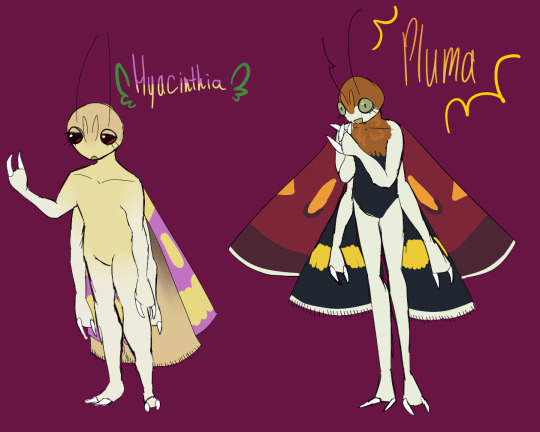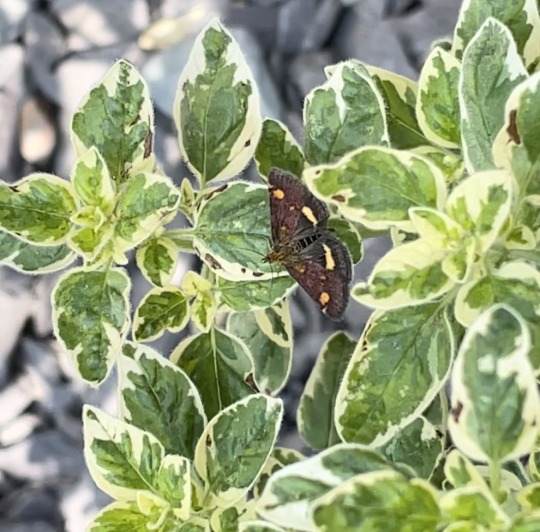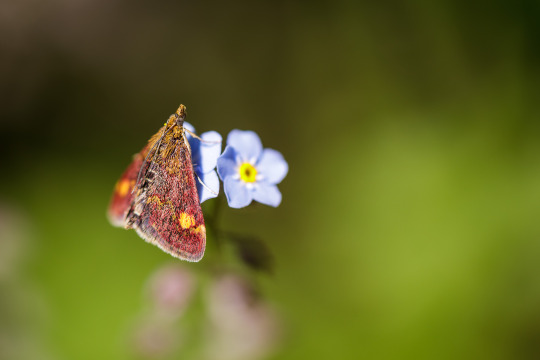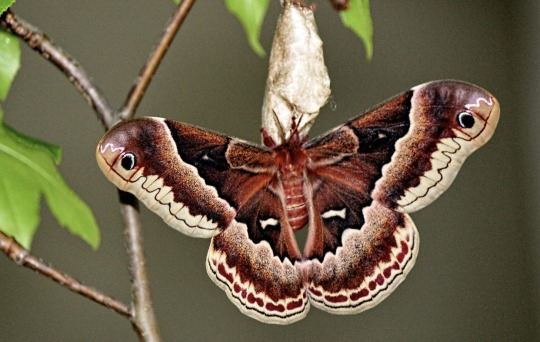#pyrausta aurata
Explore tagged Tumblr posts
Text

Feeding Mint Moth
A mint moth feeding on a forget-me-not flower in the morning sunlight.
#canon#canonuk#fauna#insect#insects#invertebrate#invertebrates#minibeast#minibeasts#mint moth#moth#moths#nature#outdoors#pyrausta aurata#wildlife
113 notes
·
View notes
Text
Moth of the Week
Mint Moth
Pyrausta aurata

[Right | Left]
The mint moth is a part of the family Crambidae, the grass moth family. It was first described in 1763 by Giovanni Antonio Scopoli (sometimes Latinized to Johannes Antonius Scopolius).
Description This moth has purple-brown forewings with yellow marks. The marks on the wings varies but is usually one yellow spot near the middle of the wing but leaning closer to the costa (top edge/vein of the wing). It is also common to have smaller yellow marks with the larger spot. It is possible for the forewing to be blank. It is also possible to have yellow markings that look like a wavy band on the forewings. The hindwings are a dark brown or black with a yellow band in the center.
Wingspan: 1.8 - 2 cm (0.71 - 0.79 in).
The caterpillar of this moth ranges from light green, dark green, light brown, black gray and reddish with a darker back line. They also have a dark brown head.
Length: 13 cm (≈0.512)
Diet and Habitat This species most often eats mint (Mentha spicata and Mentha rotundifolia) but also eats plants like marjoram, Salvia pratensis, Melissa officinalis, Nepeta cataria and Calamintha species.
This species is widely distributed in Europe, North Africa, and North Asia. It reaches to Siberia, North China, Korea, and Japan in the east and to Asia Minor, the Middle East, Iran, Afghanistan, Middle Asia and Mongolia in the south. They inhabit chalk and limestone grassland, woodland, marshland, quarries, places with waterside vegetation, and gardens
Mating This moth has two generations a year in north-west Europe. It flies from April until the end of September. Specifically in the UK, it breeds from May to June then from July to August.
Predators This species flies during the day and at night. No listed protections or specific predators.
Fun Fact The mint moth (Pyrausta aurata) can be mistaken for Pyrausta purpuralis as they are related. However, Pyrausta purpuralis is larger and has a more distinct band on the forewing. This band is usually divided in 3.
(Source: Wikipedia [1][2], Butterfly Conservation)
#libraryofmoths#animals#bugs#facts#insects#moth#lepidoptera#mothoftheweek#crambidae#mint moth#Pyrausta aurata#small purple and gold moth#tw bugs
38 notes
·
View notes
Text




Goldzünsler auf Thymian
#urban garden#schmelzgarten#ari fink photography#gemeinschaftsgarten#thymian#Pyrausta aurata#Goldzünsler#Purpurzünsler#5.5.2024#Schmetterlinge
1 note
·
View note
Text

5.5.2024: Goldzünsler
#photojournal#phototagebuch#tagesphoto#photo diary#photo of the day#photo du jour#photo des tages#vienna#wien#urban garden#5.5.2024#Pyrausta aurata#goldzünsler#purpurzünsler#ari fink photography
1 note
·
View note
Text

Mint Moth (Pyrausta aurata), family Crambidae, UK
photograph by Patrick Clement
265 notes
·
View notes
Text

Hyacinthia and Pluma, Pyrausta laticlava and Pyrausta aurata! I came up with them on a whim and am quite fond of them.
6 notes
·
View notes
Text

Mint Moth (Pyrausta aurata), family Crambidae, UK photograph by Patrick Clement
0 notes
Text
Wildlife
While the rest of us were focusing on weeds, Glyn focused on this beautiful Moth. Pyrausta aurata or Mint MothPhotographed by Glyn Evans,identified by Linda Nottage Linda Nottage identified it from the photo as Pyrausta aurata, more commonly known as the Mint Moth. Its larvae like to feed on various Mints, Marjoram and Lemon Balm. It is a small moth with a wingspan of just 2cm, and can be seen…

View On WordPress
0 notes
Text
Mint Moth
Mint Moth

Mint Moth | Illustration: Lesley Scoble
Mint moth How glorious doth Your cloth Of purple gold enfold your tiny frame Wings graced by A royal robe worn for a king (or queen) You fly in sun and dark the same Your dainty flight can be seen In the day and in the night A quivering glint Of deep burgundy wine tint With a hint Of sun Fluttering minutely On the mint
Lesley Scoble 23rd July 2020

Mint…
View On WordPress
#Art#crambidae family#drawing#illustration#IPad art#Mint moth#my art#my poem#Nature and Wildlife#poem#poetry#Pyrausta aurata#Verse#watercolour#wildlife art
0 notes
Text

Immigrating in adulthood means that I get the exciting experience of being surprised by life around me. I didn’t grow up with them, you see.
Yesterday the surprise came in the form of a moth the size of a thumbnail. I was hanging up laundry when I saw it - the first impression was a small fly, with a dense quickness and buzz. I could identify “moth” by its gestures, but I was enchanted by the brilliance of the graphic design - the sweet velvety purple-brown color set against the bright gold - and the gratified, lavish attention it was paying to my variegated oregano. It was tremendously excited by some mysterious property of that oregano. I mean, I get it too, but I hardly ever do an interpretive dance on it. It reminded me of a cat romping on a fresh catnip plant.
After research, I was happy to meet the MINT MOTH or SMALL PURPLE AND GOLD, which just goes to show that moth-namers - more than any other natural historians - understand the assignment. They give you two choices, both good, both descriptive, and conveying the essential character. Trustworthy folk, your moth people. My moth-fancying friend, who goes out of her way to meet new moths, has a Facebook album called Much Ado About Mothing and goes to local mothing meetings, sometimes posting the minutes, which only reinforces my take here; these people are trustworthy, diligent hands to place problems in.
I like the Linnean name too: Pyrausta aurata, the ‘aurata’ meaning gold-adorned, gilded; and Pyrausta possibly being a reference to a Greek mythological insect, which is exciting because you don’t get many mythological insects. but you’d better research that for yourself, as I didn’t see a single source I liked very much.
And best of all I liked the description of its habits. The Mint Moth loves mint and marjoram, and is a delightfully common visitor in gardens that grow these. In the wild, it follows watermint and wild marjoram. These plants form forage for its polite caterpillars, who barely affect the host plants at all. And if you have a garden in the uk with mint and marjoram, a very tiny creature the size of a thumbnail may come and roll around in it.
Now, I have mint and marjoram - but it really wanted that oregano, which was interesting to think about - something worth exploring and understanding better, even though it isn’t the food source of its caterpillars. Oregano is a member of the Lamiaceae family, which mint and marjoram belong to, so it clearly has something that mint moths like; and even though the marjoram is right next to it, it was clearly worthy of deep mothy investigation. Who knows what’s in the mind of a moth! I hope if any caterpillars emerge from this little dance, they’re happy with eating oregano…
Hurray for little visitors who bring surprises.
649 notes
·
View notes
Text

Sunny Mint Moth
A tiny mint moth sitting in the sunlight on a forget-me-not flower, in the garden.
#canon#canonuk#fauna#garden#insect#insects#invertebrate#invertebrates#minibeast#minibeasts#mint moth#moth#moths#nature#outdoors#pyrausta aurata#wildlife
102 notes
·
View notes
Photo

The mint moth (Pyrausta aurata) is a small moth from the family Crambidae, also known by the common name Small Purple and Gold. This species can be found in most of Europe and it is also widespread in North Africa and North Asia. - Wikipedia
Pyrausta aurata, photo by Ryszard. CC.
181 notes
·
View notes
Video
youtube
Wildes Wien: Goldzünsler (Pyrausta aurata)
Quelle: Ari Fink Photography
#Pyrausta aurata#Urban Garden#Gemeinschaftsgarten#Purpurzünsler#Goldzünsler#Thymian#5.5.2024#Ari Fink Photography#Schmetterlinge
1 note
·
View note
Photo

Tiny mint moth (Pyrausta aurata) on a flower bud
79 notes
·
View notes
Note
Oho...👁️w👁️ Might I see your moths at this hour
as far as colors go, deep pinkish purple moths remind me of you! moths such as:

the mint moth (Pyrausta aurata),

the common crimson and gold moth (Pyrausta purpuralis),

or the purple bordered gold moth (Idaea muricata).
however, i feel like you would be a large moth! possibly a silkmoth, such as

the promethea silk moth (Callosamia promethea)

or ceanothus silk moth (Hyalophora euryalus).
unfortunately a lot of silk moths donʻt seem to have the same pinkish purple colors smaller moths get away with. a shame.
lets talk about silk moths! the family saturniidae has about 2,300 species! some of the largest moths in the world belong to the silk moth family! with about 8 subfamilies (nine if you believe Ludiinae belongs), it has quite a lot of variety! many of the moths commonly considered as beautiful as butterflies are saturniids!
adult silk moths typically have large wings, and can often be found with bright colors and translucent eye spots. the average saturniid wingspan is between 1-6 inches (2.5-15 centimeters) but tropical species may have larger wingspans.
the saturniids are called silk moths because of their cocoons! most produce a silken cocoon, which in certain species can be harvested to make silk. adult saturniids do not have moths! they rely on the food they stored as caterpillars, and many only live for around a week.
most species of silk moths are harmless as adults, and many are harmless caterpillars as well! some eye-catching species are raised in schools or by children as educational pets, and the silk cocoons are sometimes used as a keepsake.
some of the most noteworthy silk moth genus are: the emperor moths, the luna moths, royal moths, and giant silk moths
some popular species are: Bombyx mori (domesticated silk moth, raised for silk production), the atlas moth (Attacus atlas, one of the largest moths), Actias luna (most well known luna moth), mopane worm (Gonimbrasia belina, emperor moth eaten by humans as a caterpillar), and the rosy maple moth (well known silk moth, also the smallest silk moth at 3.2 to 5 cms)
source:
https://butterfly-conservation.org/moths/mint-moth
https://inaturalist.ca/taxa/84361-Pyrausta-purpuralis
https://www.dorsetbutterflies.com/2018/06/purple-bordered-gold-moth-slop-bog/
https://www.butterfliesandmoths.org/species/Callosamia-promethea
https://www.butterfliesandmoths.org/species/Hyalophora-euryalus
3 notes
·
View notes
